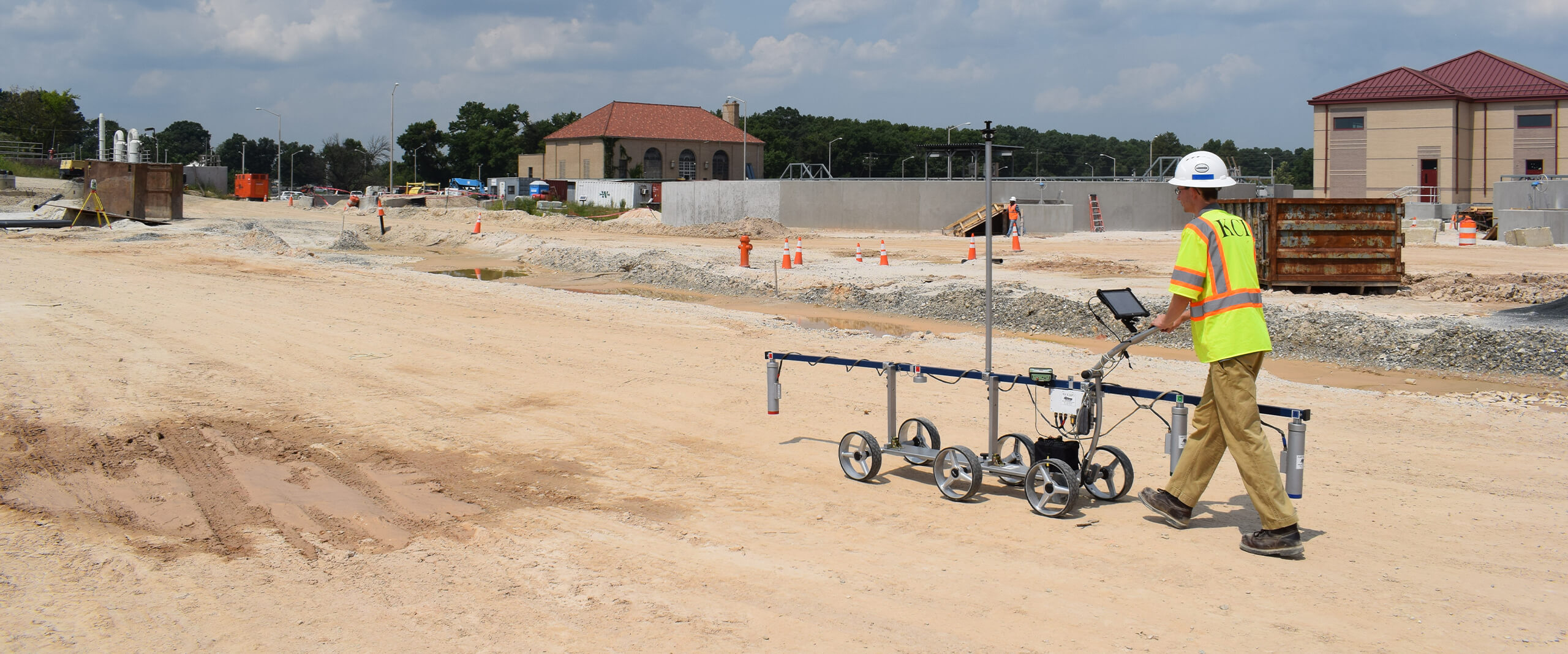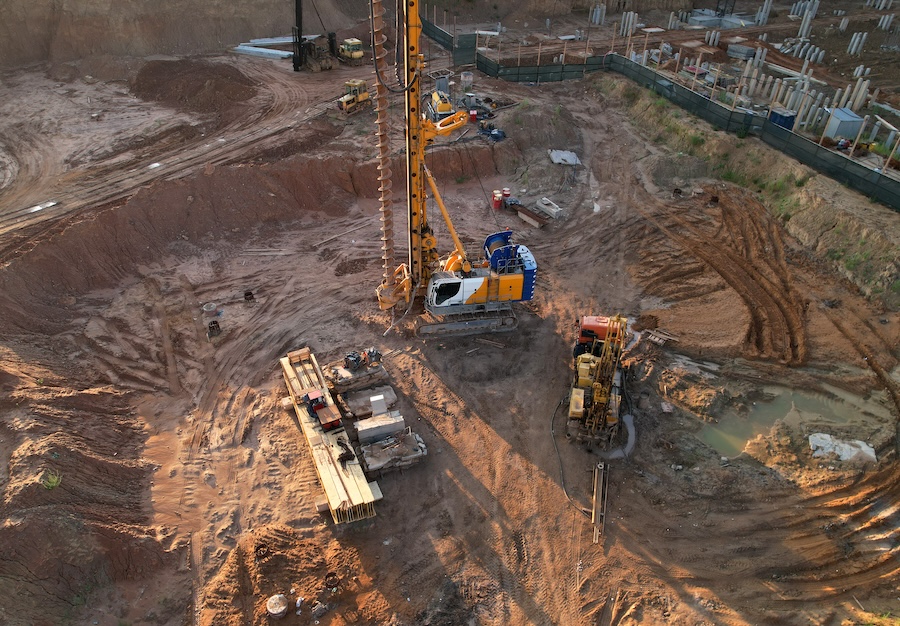Exploring the Role of a Geotechnical Engineer Description and Duties
A Comprehensive Summary of Geotechnical Engineering Techniques and Their Influence On Modern Civil Engineering Projects
Geotechnical engineering offers as the foundation of modern civil engineering, supplying crucial techniques that attend to the complexities of subsurface problems. The interaction of dirt evaluation, foundation layout, and innovative innovations shapes the stability and sustainability of facilities projects.
Significance of Geotechnical Design
Geotechnical design functions as an essential foundation for civil engineering tasks, influencing the security and security of frameworks. This technique focuses on the actions of soil and rock materials, offering vital insights that lead the style and building processes. By recognizing the communication in between the earth and crafted frameworks, geotechnical designers can assess dangers related to ground problems, such as negotiation, slope stability, and liquefaction.
The significance of geotechnical design extends beyond simple structural honesty; it plays an essential role in environmental defense and sustainability. Effectively performed geotechnical evaluations make sure that tasks decrease their ecological footprint and abide by regulative demands (all about geotechnical engineering). Furthermore, geotechnical engineering contributes in website choice, allowing designers to recognize appropriate locations for construction that minimize possible risks.
Furthermore, geotechnical engineering fosters technology in civil design by advancing techniques for ground renovation, structure style, and excavation. The self-control's contributions are vital in attending to obstacles presented by differing dirt problems, hence promoting efficient and risk-free framework advancement. Overall, the value of geotechnical engineering is vital in ensuring that civil engineering jobs are not only practical but additionally resilient versus synthetic and natural misfortunes.
Secret Methods in Geotechnical Design

Another essential strategy is dirt stabilization, which includes changing soil homes to enhance load-bearing capacity or decrease negotiation. Approaches such as including cement, lime, or making use of geosynthetics are typically made use of to attain soil renovation.
Ground enhancement strategies, including dynamic compaction and vibro-replacement, are additionally important. These methods intend to densify loose or soft dirts, boosting their stamina and reducing liquefaction capacity in seismic areas.
Preserving frameworks, such as sheet stacks and soil nailing, are used to support excavations and avoid soil activity. Incline stabilization strategies, including water drainage systems and keeping walls, are crucial for reducing landslide threats.

Dirt Analysis and Checking Approaches
Reliable dirt analysis and testing techniques are critical for understanding the physical and chemical homes of soil, which straight affect design choices. A detailed evaluation of dirt features is necessary for anticipating habits under different loading problems and ecological influences.
Common dirt screening approaches consist of both field and research laboratory methods. Field tests, such as the Criterion Penetration Test geotechnical specialist (SPT) and Cone Penetration Examination (CPT), offer prompt insights into dirt toughness, stratification, and thickness. These tests assist designers evaluate website conditions successfully before even more comprehensive research laboratory evaluations.
Research laboratory testing methods, such as Atterberg restrictions, grain dimension distribution, and compaction tests, are vital for figuring out soil plasticity, dampness web content, and optimum compaction levels. Progressed techniques like triaxial tests and consolidated undrained (CU) tests offer beneficial data on shear stamina and reliable stress parameters.
Chemical testing, including pH, electric conductivity, and natural material analysis, is also crucial for comprehending potential dirt contamination and its effect on building materials. Collectively, these dirt analysis and screening techniques develop the foundation of informed decision-making in geotechnical engineering, making sure the safety and security and stability of contemporary civil engineering projects.
Structure Design Approaches
Foundation design approaches are important in ensuring the stability and longevity of frameworks. These methods can be categorized into deep and shallow foundations, each matched to certain dirt problems and packing scenarios. Shallow structures, such as spread grounds and mat structures, are normally utilized when surface area soils have adequate bearing ability. They distribute the load over a bigger location, lessening settlement threats.
On the other hand, deep foundations, including heaps and pierced shafts, are utilized when surface soils are poor or weak for supporting the structure. These foundations transfer loads to much deeper, extra stable dirt or rock layers, making them important for high-rise structures and bridges in difficult geotechnical problems.
Picking the ideal structure style includes detailed geotechnical examinations, consisting of dirt make-up, bearing capability, and groundwater conditions. Designers must think about elements such as negotiation, side loads, and possible seismic activity to make certain the structure's efficiency over time.
Ultimately, a well-executed structure layout is a crucial facet of civil engineering, directly influencing the safety, resilience, and performance of structures. geotechnical companies in south africa. By straightening foundation types with site-specific problems, engineers can successfully alleviate dangers connected with structure failing
Innovations Forming Civil Engineering

Lasting products, such as high-performance concrete and recycled accumulations, are also gaining traction, promoting environment-friendly techniques while keeping architectural integrity. Additionally, advanced geotechnical techniques, such as ground enhancement and deep mixing methods, are enhancing the security of structures in tough dirt problems.
Furthermore, making use of drones and remote picking up modern technology is boosting website checking and checking, supplying real-time data that aids in managing construction progress and safety. The application of ingenious construction approaches, such as modular and premade building and construction, better speeds up project timelines and lowers waste. Jointly, these advancements are not only transforming civil engineering practices yet likewise guaranteeing that modern framework meets the needs of an expanding worldwide populace while attending to environmental problems.
Conclusion
To conclude, geotechnical design methods are integral to the success of modern-day civil engineering tasks. The application of website investigation, dirt stabilization, and ground enhancement methods guarantees the safety and security of facilities. Technologies such as Building Details Modeling (BIM) and advanced surveillance innovations further boost project performance and accuracy. By utilizing these techniques, designers can mitigate threats and add to the advancement of resilient metropolitan settings, eventually fostering sustainable development and safety in civil engineering techniques.
Geotechnical design serves as the foundation of contemporary civil design, giving important strategies that attend to the complexities of subsurface conditions.Geotechnical engineering serves as a critical foundation for civil engineering tasks, influencing the safety and stability of structures.In enhancement, geotechnical engineering fosters development in civil engineering by progressing methods for ground renovation, foundation style, and excavation. On the whole, the significance of geotechnical engineering is paramount in guaranteeing that civil engineering projects are not only possible however likewise durable against man-made and natural adversities.
In conclusion, geotechnical engineering methods are indispensable to the success of contemporary civil engineering tasks.